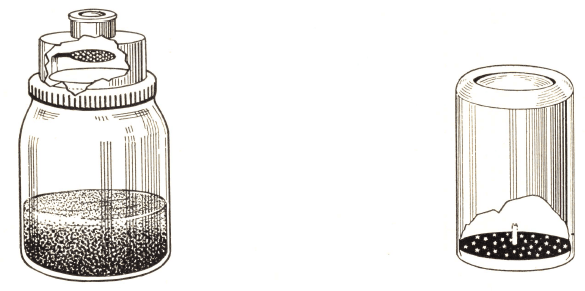RADIOSCOPE—An instrument for detecting the presence of radio-activity in waters, ores, etc. by the scintillation method. Any material containing radium constantly throws off emanations which will produce minute flashes of light on striking a screen of phosphorescent zinc sulphide. The radioscope consists of a suitable glass jar in which the sample is placed, and, if dry, to which water is added. If radium is present, the emanations will strike on the phosphorescent zinc sulphide screen, located in the bottom of the jar-cover, and may be observed through the lenses and eye-piece mounted above the screen. Observation should be made at night or in a dark room.
SPINTHARISCOPE—This little instrument in a marvelous manner shows the radiant energy of radium salt placed on a pin projecting from the center of the phosphorescent screen. Opposite this screen is a high-grade adjustable lens for observing the flashes of light as the radium rays strike the screen. Near the pin the intensity of radiation is so great that the scintillations are very thick, while at some distance the radium flashes are more scattered, so that by mounting the radium in this way, all intensities of the luminous effect of the rays are seen. Convenient pocket size.

